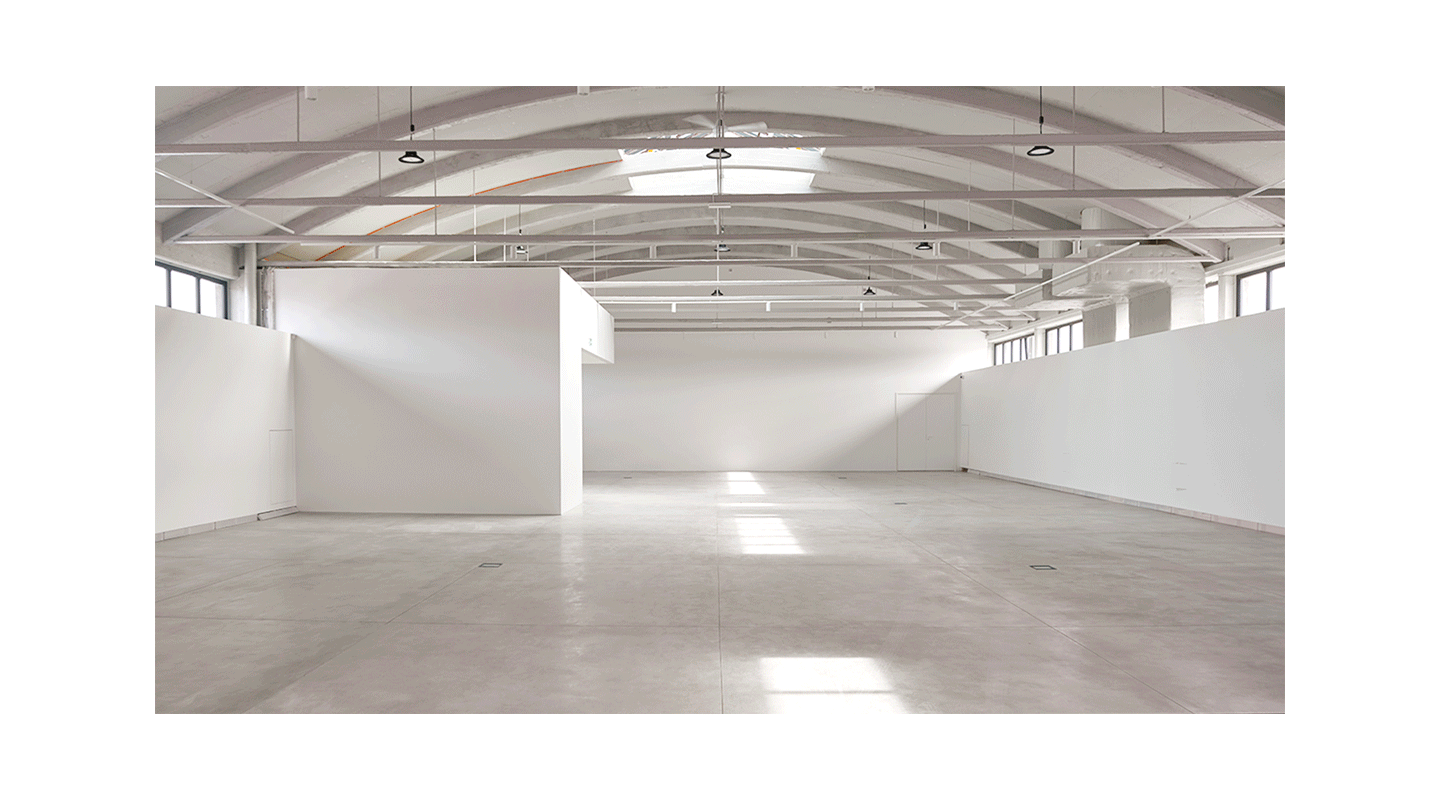Featuring an exhibition, film, education and residency program
September 20, 2019, 7pm
Kai Art Center opens its doors to the public in the culturally vibrant area of Noblessner on Tallinn’s waterfront.
Spearheaded by the Estonian Contemporary Art Development Center (ECADC), the heritage-protected former submarine plant, which has been renovated by KAOS Architects, provides 450 m2 of top-floor exhibition space. It also houses an auditorium, an education center, and is home to a new international residency program. In addition, the center offers working space for local art organisations.
Exhibition program
Presenting four main exhibitions a year, the center launches with the international group show, Let the field of your attention…. soften and spread out, curated by Hanna Laura Kaljo. The exhibition is also part of Tallinn Photomonth’s main program.
Featuring eight artists working across several disciplines, the exhibition runs until December 1, 2019 and boasts an extensive program of events that include curator tours, artist film screenings, walks, performances and workshops. Further information about the program can be found at kai.center.
Film program
In partnership with Sõprus Cinema, Tallinn Black Nights Film Festival and the Whitechapel Gallery in London, Kai Art Center will host and produce a comprehensive film program. Selected to curate the program’s first year, is Estonian visual artist and filmmaker, Ingel Vaikla.
In November, Kai will host a program of events to introduce the Artists’ Film International platform. Established by the Whitechapel Gallery, it is a collaborative project that features film, video, and animation from around the world, bringing together recent moving image works which are presented over the course of a year in each venue. The launch program will feature screenings, talks, and a series of workshops run by experts in the field aimed at helping filmmakers and practitioners create and promote their work.
Residency program
At the core of the center’s programming is the Kai Residency, which launches on October 15 when the first 15 residency candidates will be announced. Aiming to support innovative practices, develop global networks, and engage the local art community in Tallinn, the residency invites international visual artists, curators, writers, and other contemporary art professionals. Kari Conte (ISCP, New York) has been appointed Kai Residency Curator for the inaugural year.
Education program
Kai will continue to build on ECADC’s strong ethos of education within the ever-expanding field of contemporary visual art and culture. To support professional development within the contemporary art world, the center will run an ongoing series of masterclasses curated with both Estonian and international cultural organisations.
Kai Art Center’s opening night will be marked by a sunset performance by Raphaele Shirley (US) at 7:28pm. Taking place in front of the building, Shirley will create an ephemeral outdoor sculpture as a temporary landmark for Kai, visible from land, sea, and air. The piece will be introduced by musicians Katariin Raska and Anna-Liisa Eller. The performance is followed by the public opening of Kai Art Center at 8pm.
This year’s Foto Tallinn, an art fair dedicated to promoting and introducing contemporary photographic art, will also take place at Kai Art Center between September 27-29, 2019
For information and press inquiries relating to Kai Art Center please contact
Alexia Menikou, alexia [at] kai.center, International or Eeva Lillemägi, eeva [at] kai.center, Estonia
Notes to editors
The building and the history
Kai Art Centre is located at Port Noblessner on the shores of Tallinn Bay, the Seaplane Harbour and the historic Kalamaja district as its neighbours. The history of the port dates back to 1912 when two businessmen from St. Petersburg—Europe’s biggest oil industrialist Emanuel Nobel (Alfred Nobel’s nephew), and Arthur Lessner, the owner of G. A. Lessner machinery plant—built a submarine production plant on the site to serve the navy of the Russian Tsar. The name Noblessner is a combination of the founders’ last names. Between 1913 to 1917, a total of 12 ultramodern submarines were built in the complex. When Estonia gained independence in 1918, submarine production at Noblessner halted, but the shipbuilding and repair continued until August 2018. This area was closed to the public for nearly a century due to its military functions. The two-story, reinforced concrete building was constructed in 1916 and originally housed workshops for coppersmiths and woodworkers necessary for shipbuilding. The most unique element of the building is the curved concrete roof which gives the center’s exhibition space its 6-meter high ceiling.
The architects and designers
Kai Art Center has been designed by KAOS Architects. Founded by two women—Margit Argus and Margit Aule—KAOS are known for their innovative work with historic buildings for contemporary use. In addition to Kai their current projects also include the new headquarters for Estonian Media in Tallinn and the remodeling of a medieval castle in Western Estonia, in Haapsalu. The center is being built by 1Partner, and the brand identity and web design is by Stuudio Stuudio.
The space
Kai’s boasts 450 m2 of top-floor exhibition space with essential storage and technical facilities. It also offers office space and conference rooms for related art organizations, and an auditorium that seats 100 people, as well as residency space for international curators, artists and critics. Located on the first floor will be new restaurant Lore, the latest endeavor by Janno Lepik and Kristjan Peäske who run well-known and loved restaurant Umami, Japanese food court izakaya called Kampai run by chef Hide Hirakata, cocktail bar and lifestyle store KAIF, and local favourite the Suhkruingel bakery.
The name
The name “Kai,” conceived by design Studio Haiku, refers to a dock, and the building’s location as directly open to the sea. With an association to the sea in many languages, the word has universal meaning.
Kai Art Center is funded by Enterprise Estonia (European Regional Development Fund), BLRT Group, Lindermann, Birnbaum & Kasela and Viru Center.


